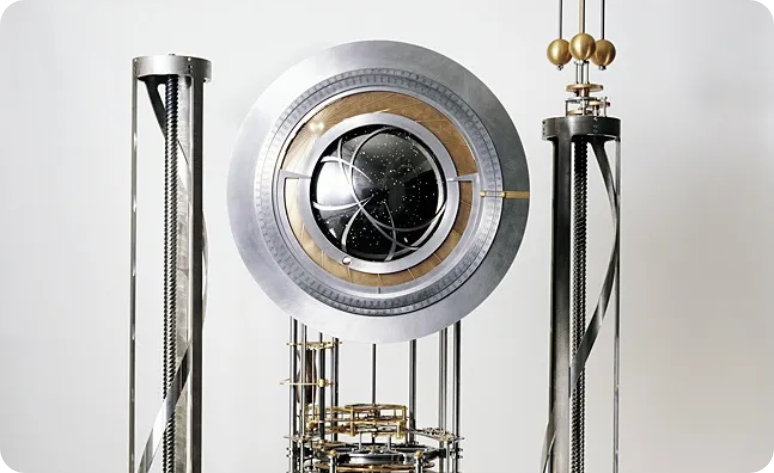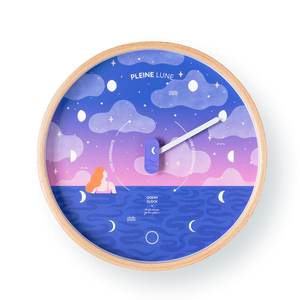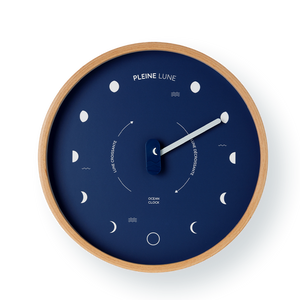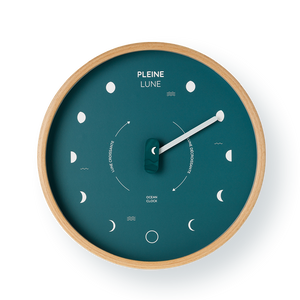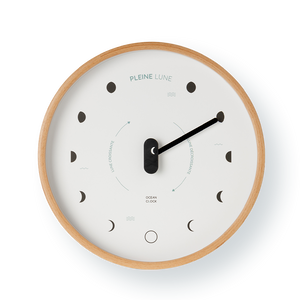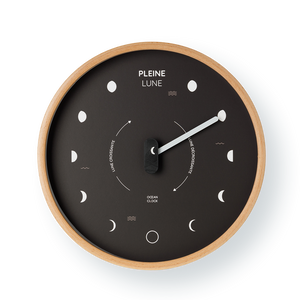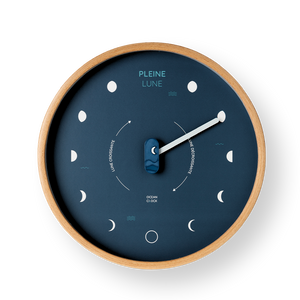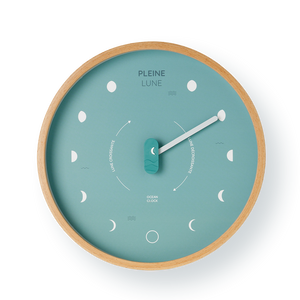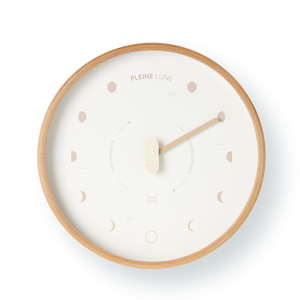Understand it in a flash!
How to read a lunar clock
Nothing could be simpler than reading the Ocean Clock lunar clock! Not only a useful creation, our version of the lunar clock also becomes fun thanks to its second hand.
Discover the phases of the moon at a glance!
Its dial
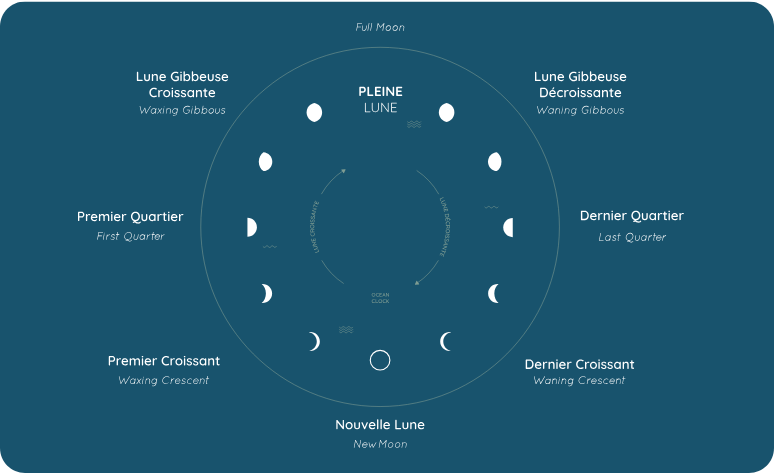
The dial displays the different lunar phases. The hand moves slowly over a cycle of about 29.5 days, corresponding to a complete lunar cycle.
Depending on the stage of the cycle, various phases of the Moon appear on the dial: the new moon, when the Moon is completely in shadow and therefore invisible; the first crescent, where a thin segment of the Moon becomes visible; then the first quarter, when half of the Moon is illuminated. Next, the Moon continues to wax until the full moon, when its entire visible face is illuminated.
The lunar clock thus lets you know where the Moon is in its cycle, whether waxing or waning. After the full moon passes, the disk starts to wane again, marking the waning phases such as the gibbous moon and the last crescent before returning to the new moon.
THE OCEAN IN SIGHT
True to our style, we like to break the rules, and this lunar clock has unique features typical of Ocean Clock. Its little wave patterns indicate the days of high and low tide coefficients throughout the month.
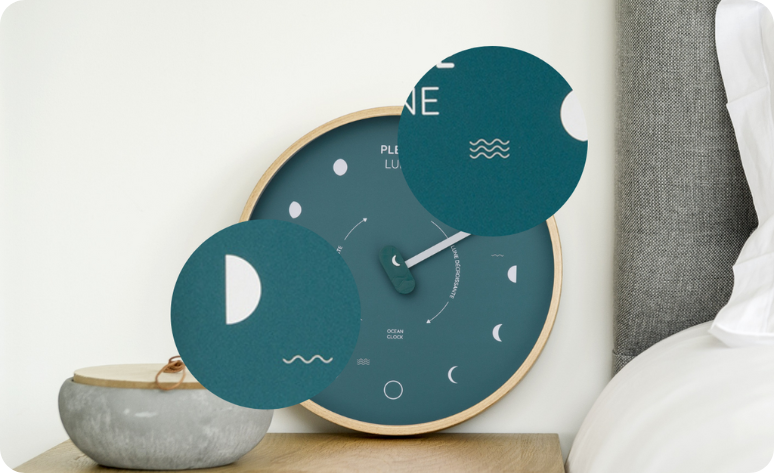
THE SECOND HAND
To accurately read the lunar phases on our clocks, it is important to focus on the long hand. This is what indicates the current position of the Moon.
The small central second hand, meanwhile, plays a secondary but essential role: it allows you to check that the clock is working properly. If the second hand is moving, everything is fine! If it has stopped, it’s a sign that the battery needs to be replaced.
A simple and practical way to follow the lunar cycle while ensuring your clock is functioning perfectly.

Learn more about the Moon, the Sun, and the stars
The Earth and the Sun. When these three celestial bodies are aligned in a particular way, different portions of the Moon are illuminated. This phenomenon gives rise to the lunar phases. Each phase corresponds to a different angle of illumination, causing variations in the appearance of the Moon as seen from Earth. This play of sunlight reflected on the Moon is also influenced by other cosmic factors.
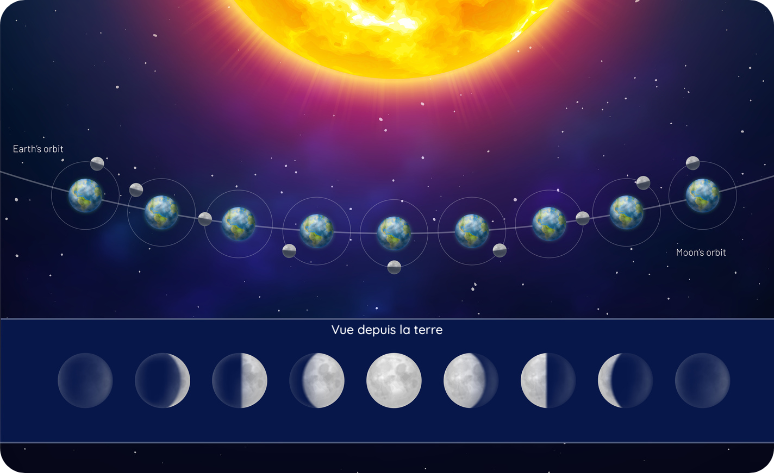
In the background, stars twinkle, forming fixed constellations that appear motionless due to the vast distance separating them from us. Unlike our Moon and Sun, stars are celestial bodies located light-years away, each one a gigantic nuclear reactor.
While the Sun—much closer—plays a vital role in providing light and sustaining life on Earth, the stars quietly dot our night sky, serving as a backdrop that reminds us of the vastness of the universe.
Extraordinary clocks around the world
Lunar clocks are fascinating timepieces that combine craftsmanship with astronomical precision.
Several exceptional lunar clocks exist around the world, each showcasing the creativity and technical mastery of clockmakers.
One of the most famous is the astronomical clock of Prague, dating back to 1410. Located on the Old Town Hall, it displays not only the time, but also the phases of the Moon, the movement of the Sun, and even the zodiac signs. This incredible medieval mechanism continues to captivate visitors to this day.
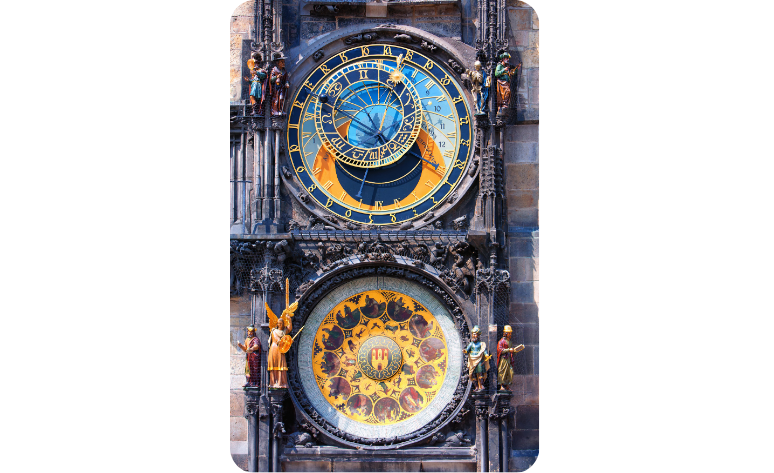
Another remarkable lunar clock is the one at the Royal Greenwich Observatory in London. This horological masterpiece was designed for mariners, enabling them to navigate using the lunar phases and tides. Both precise and elegant, it remains an iconic example of astronomical timekeeping.

In Strasbourg, the astronomical clock of the cathedral also deserves special mention. Created in the 16th century, it displays the phases of the Moon with impressive precision, while also being a masterpiece of sacred art.
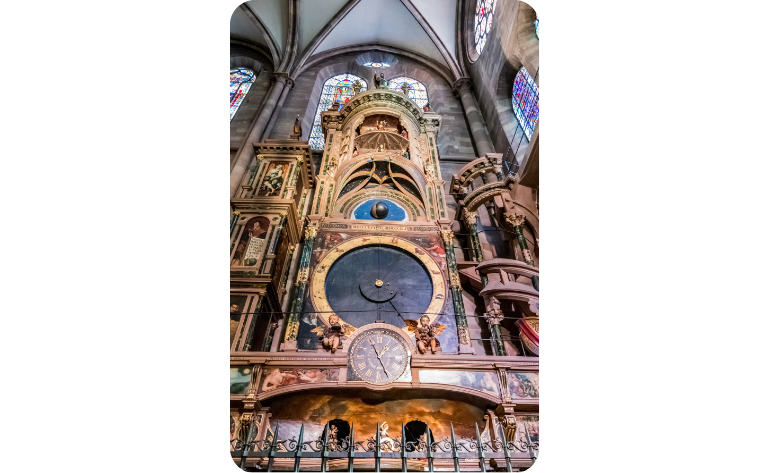
Finally, the "Long Now Clock", a project still in progress, aims to create a clock capable of functioning for 10,000 years, including the tracking of lunar and solar cycles. This futuristic clock embodies a vision of sustainable engineering for the centuries to come (captured here in an image by Rolfe Horn).
